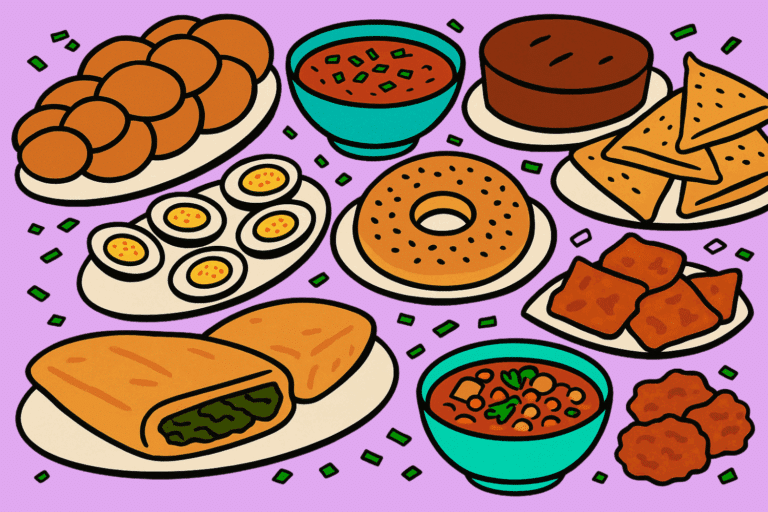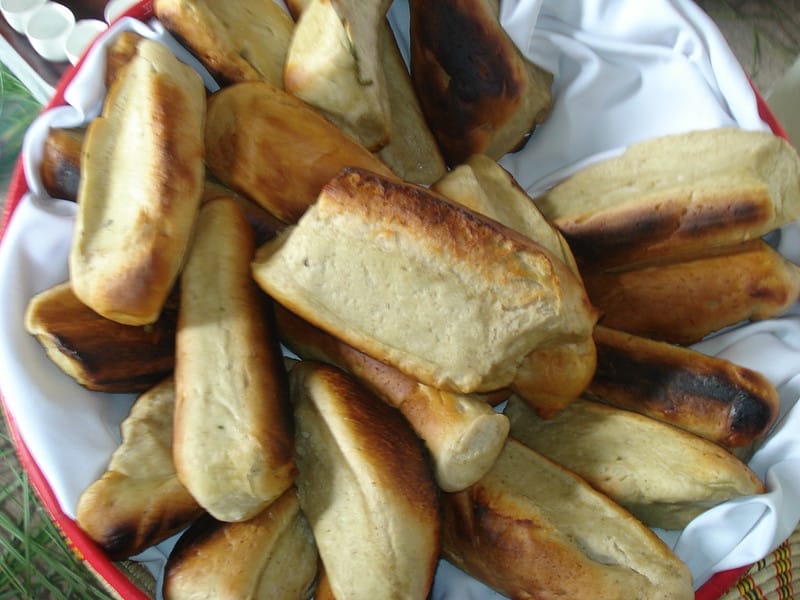
Fasting may be at the heart of Yom Kippur, but it’s the break fast that tells the story of Jewish kitchens around the world.
Imagine the first sip of velvety Moroccan harira, fragrant with cinnamon and ginger. Picture a golden tray of Argentine cheese-stuffed empanadas, still warm from the oven. Or the familiar spread of New York bagels, sliced thick and piled high with lox and cream cheese. Each table is a map, each dish a passport, revealing how Jewish communities across continents turn hunger into celebration.
The foods that appear at break fast tables vary because Jewish communities carried their culinary traditions with them wherever they lived.
In Eastern Europe, dairy-rich spreads of blintzes, bagels, and kugel reflected the abundance of milk and wheat. In North Africa, soups like harira and sweet pastries came from local ingredients and flavors woven into Jewish life there. Across Latin America, empanadas and tropical fruits joined the menu, while Middle Eastern communities leaned on pita, hummus, and olives. Each community’s break fast mirrors its geography, its neighbors, and centuries of adaptation — proof that while Yom Kippur is observed the same way everywhere, the meal that ends it tastes wonderfully different across the diaspora.
Check out Unpacked’s guide to Yom Kippur 2025 here.
What do different Jewish communities eat for Yom Kippur break fast?
While most Jews in the United States think break fasts are a time for sweet kugel, bagels, lox, and black & white cookies, this traditional practice looks different in Jewish communities across the world.
You can really eat anything at a break fast — I’ve even been to a post-Yom Kippur pizza party — but here are some traditional foods that Jewish people around the world eat to celebrate.

Ashkenazi Jews: All the appetizing store classics. Bagels and cream cheese, lox, pickled herring, tuna salad, egg salad, babka, sweet kugel, challah, and a variety of cookies can be seen in most Ashkenazi homes in the U.S.
Sephardic Jews: While the Sephardic community is large and has many practices, they often break their fast with meat-based soups or stews, sometimes more “main course” fare, rather than just brunch foods. Many eat chicken soup, and Italian Jews often zhuzh theirs up with turkey meatballs and pasta.
Tunisian and Libyan Jews: These communities eat orange blossom cookies with seeds and nuts called boulou. This is often accompanied by a soup course.
Moroccan Jews: Harira, a delicious tomato-based soup made with lentils and chickpeas, is often eaten during break fast celebrations. Sometimes, noodles and other legumes are added as well. It’s believed that the Jewish community in Morocco adopted this custom from local Muslim communities, who traditionally prepared it for the evening meal to end their Ramadan fast, iftar. Moroccan Jews also often have mint tea, marzipan cookies, and fijuelas — a sweet fried pastry. Other Moroccan Jews eat lemon chicken with olives, a hearty stew, to kick off their meal, or eat a chickpea and chicken omelet.
Iraqi Jews: This community breaks their fast with hariri, a homemade almond milk sweetened with rose water, and yummy date cookies. Other Iraqi break fast staples include a flaky pastry stuffed called sambusak that are traditionally stuffed with beef, chicken, cheese, or spinach.
Persian Jews: The Persian community famously dines on faloodeh seeb, a shredded apple that has been soaking in rose water since Yom Kippur began. They finish off their break fast with black tea, soft-boiled eggs, and sometimes a stew.

Ethiopian Jews: The Ethiopian community often breaks its fast with a meal called Yedoro dabo, which is a fluffy bread dipped in spicy chicken sauce. The dabo bread is also eaten with honey and honey wine.

German Jews: In a fun nod to the tradition of breaking the fast after seeing three stars, German Jews eat Zimtsterne cookies. These are star-shaped cinnamon and nut cookies, with the shape representing the end of the fast.
Greek, Turkish, and Balkan Jews: For Jews across the Balkans and part of the Mediterranean, they drink a sweet and refreshing beverage called pepitada. Families will save their melon seeds (often from honeydew or cantaloupe) for weeks to prepare this drink. In addition, many Greek and Turkish Jews break the fast with Avgolemono, an egg-and-lemon soup with a chicken broth base traditionally thickened with rice.
Yemenite Jews: The Yemenite community is known for serving zom, a Yemenite Jewish soup made of soft cheese or strained yogurt, often along with challah or kubaneh.
Indian Jews: Among Bene Israel Jews, a crescent-shaped sweet pastry, called puri, is filled with sweetened semolina, nuts, and cardamom, and is made to break the fast.
Mexican Jews: While this is not practiced anymore, Mexican crypto Jews (those who secretly practiced their Judaism during the Spanish Inquisition) would drink hot chocolate to break their fast.
Originally Published Sep 28, 2025 11:44AM EDT


